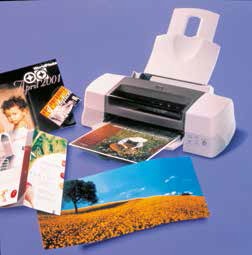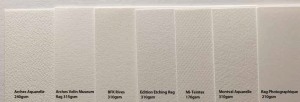articles/Paper/hahn-bar-satin-page3
The Great Paper Chase - Hahnemuhle Fineart Baryta Satin 310 - part 3 of 1 2 3 4 5
by Mike McNamee Published 01/12/2014

The Art of Fine Art Printing
I decided to put together a Superclass after chewing over the material presented in the 2014 16x20 competition. While the standard was high, there were a handful of prints which, while strong in content, were marred by flawed printing.
We are today blessed with fabulous cameras and equally fabulous printers. The inkjet has come a long way and the progress is tracked through almost 500 pages and about a quarter of a million words in Imagemaker's long-standing Paper Chase series. This started in February 2004, the eleventh issue of Professional Imagemaker, but in fact it had begun in my time at Digital Photographer, when the graphic layout was first set out, and the name coined. This was in the days of the Epson 1270. The Epson 1290 had just been announced and people were starting to realise that it waspossible to make A3-size prints in the home at reasonable cost. There were hiccups and setbacks along the way. Early dye-based prints had fade resistance that was measured, in some instances in days, and then there was the plague of orange fading due to ozone. Metamerism was an issue when the Epson 2000P tried to overcome the fade resistance issues at the expenses of horrendous metamerism.
These days are long gone; fade resistance now betters wet chemistry colour prints, in some instances the deterioration of the paper base is the life-limiting factor. Metamerism is under control and the reproduction consistency has risen spectacularly. To track this we, at Imagemaker, have introduced ever stricter assessment criteria in order to differentiate the very good from the spectacularly good - we have not tested a poor paper for many years.
Given the universally high quality of papers and printers, the choices are actually more difficult and certainly subtle. Thes echoices may now be made on the look and feel of the paper, quality may be taken as a given.
Photographers too have progressed. Most have now climbed up the Photoshop learning curve and the content of many creative images is limited only by the imagination of the photographer. This has placed photography at the same place as the painter - anything goes. The progress is well reflected in the exhibitions from the enthusiast sector. I recently had the pleasure of looking at the selected entries for the SRGB Group exhibition (http://srgbphotogroup. co.uk/). The quality of both content and printing was outstanding, probably the best I have seen anywhere. The days of an panel of inkjet monochromes in every ugly shade of green are long gone.

The Canson papers photographed in glancing light to emphasise their texture. Texture is one of the prime considerations when choosing a paper and a reason why you must handle swatches of real paper before making your decision
The Key Milestones
So what are the key milestones on this route towards print perfection?
Around the year 1998, the Epson Photo Ex brought quality inkjet printing into the home market at a size suitable for enthusiast competitions (nominally 16x20 mount but the Ex could print 11.7 inches in width, up to 44 inches in length). It had six inks in two cartridges and measuring legacy icc profiles indicates a gamut volume on gloss paper of 681,000, that is a little over half of the standard for today. The K3 ink set progressed through UltraChrome, to Ultrachrome K3 The Art of Fine Art Printing by Mike McNamee to Ultrachrome K3 Vivid Magenta to Ultrachrome K3 Vivid Magenta HDR. Each increment produced a demonstrable increase in colour gamut so that the HDR version (with additional orange and green inks) breaches the gamut volume watermark of 1 million units on all gloss and semigloss materials. The Epson Stylus Pro 3880 lifted the bar a little higher with the ability to print to A2 size in a desktop footprint and to swiftly change between Matt Black ink and Photo Black ink. Finally the arrival of the baryta-type papers brought back the look and feel of traditional fibre-based airdried papers with spectacular colour performance and even the right kind of smell!
On the control side things have also improved.
Spectrophotometers used to be the preserve of men in white coats. These too have been simplified for use by the non-specialists and the latest version of i1 Profiler is capable of making profiles which oftentimes deliver contract proof performance right out of the box on the Epson wide-format range of printers (3880 upwards). The software can also validate the print was well, up to Fogra/Ugra specifications. As well as improved printing, the screen calibration and technologies have improved despite the attempts by Apple to make things worse. As long as you steer away from iMac screens and Retina displays you stand a fighting chance of obtaining reasonable print-to-screen matching. Soft proofing still has pitfalls but the screen calibration gear has dropped to around the £100 mark. At the most basic level you should be able to soft proof on screen and not get a nasty surprise when the print pops out. You might wish to tweak it a little, but it should be a good first proof.
Underpinning the technology improvements has been the work of the Wilhelm Institute in providing independent fade resistance (www.wilhelm-research.com/).
Printing remains a complex operation with lots of mouse clicks and decisions to make along the way. One of the more recent benefits has been that Photoshop embeds the print setting when you save your image so that next time at least you get a head start.
Please Note:
There is more than one page for this Article.
You are currently on page 3
- The Great Paper Chase - Hahnemuhle Fineart Baryta Satin 310 page 1
- The Great Paper Chase - Hahnemuhle Fineart Baryta Satin 310 page 2
- The Great Paper Chase - Hahnemuhle Fineart Baryta Satin 310 page 3
- The Great Paper Chase - Hahnemuhle Fineart Baryta Satin 310 page 4
- The Great Paper Chase - Hahnemuhle Fineart Baryta Satin 310 page 5
1st Published 01/12/2014
last update 09/12/2022 14:54:52
More Paper Articles
There are 0 days to get ready for The Society of Photographers Convention and Trade Show at The Novotel London West, Hammersmith ...
which starts on Wednesday 15th January 2025





